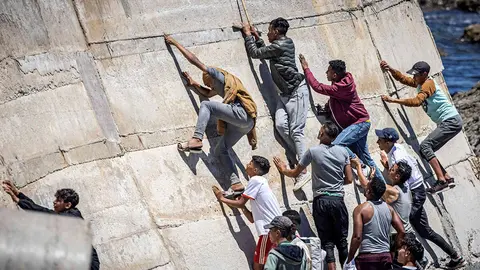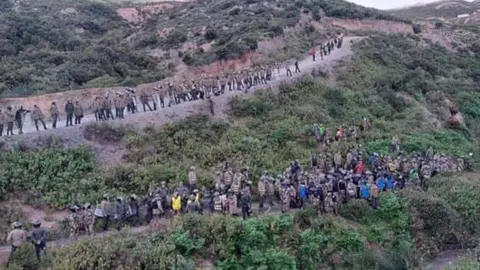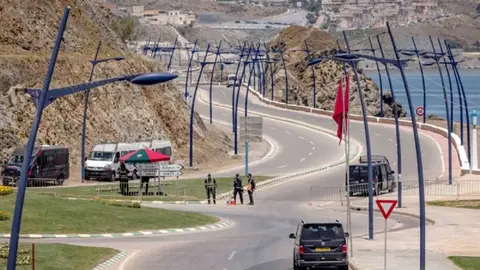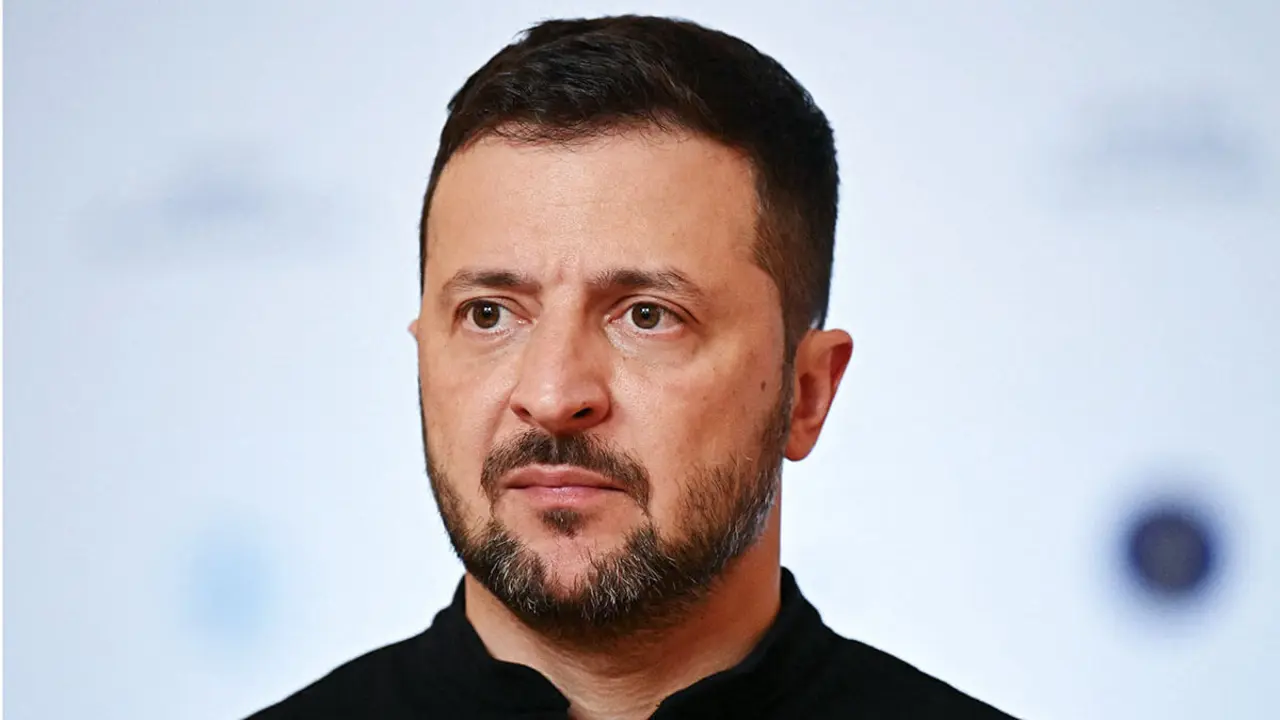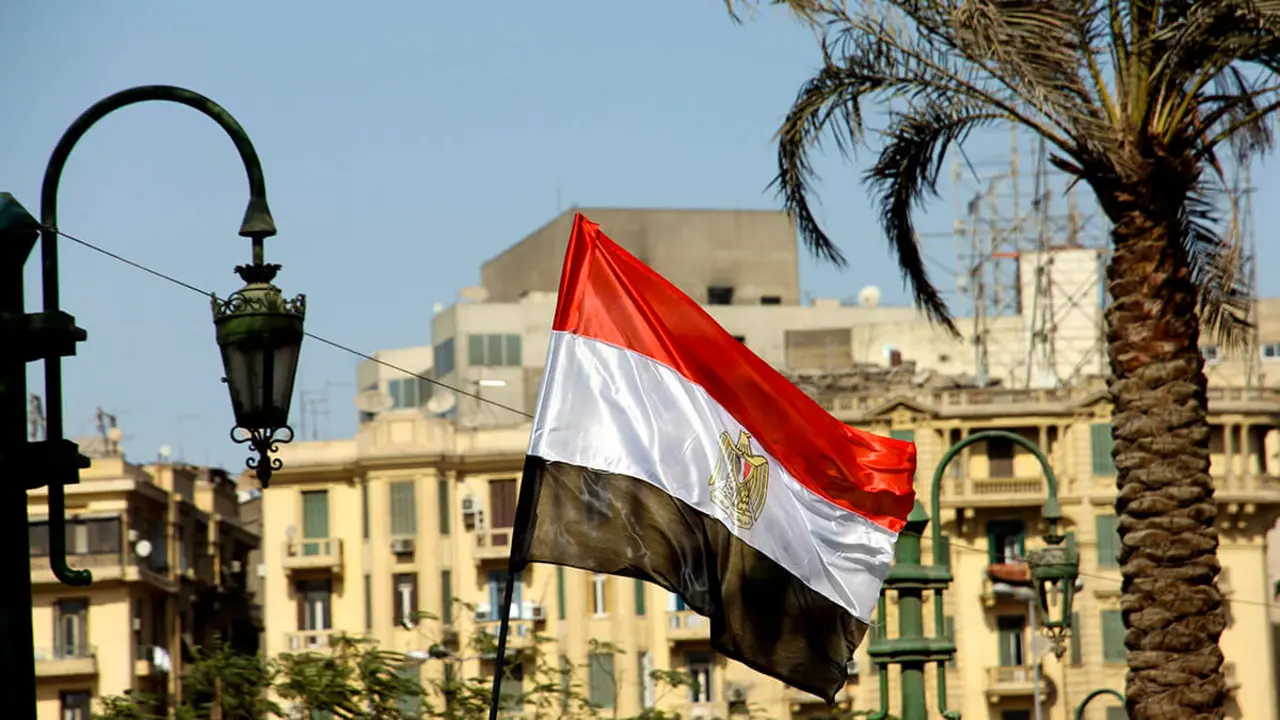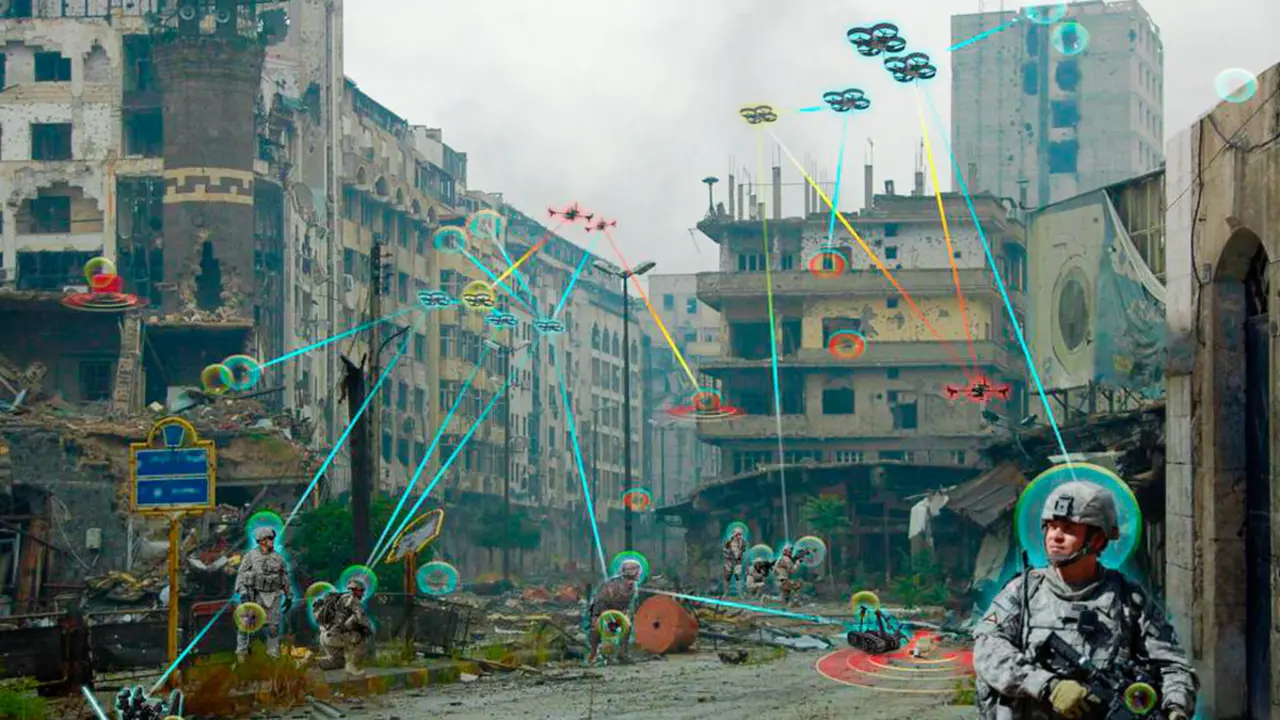‘Harraga': the Algerian strategy behind the destabilisation of the Moroccan-Spanish borders
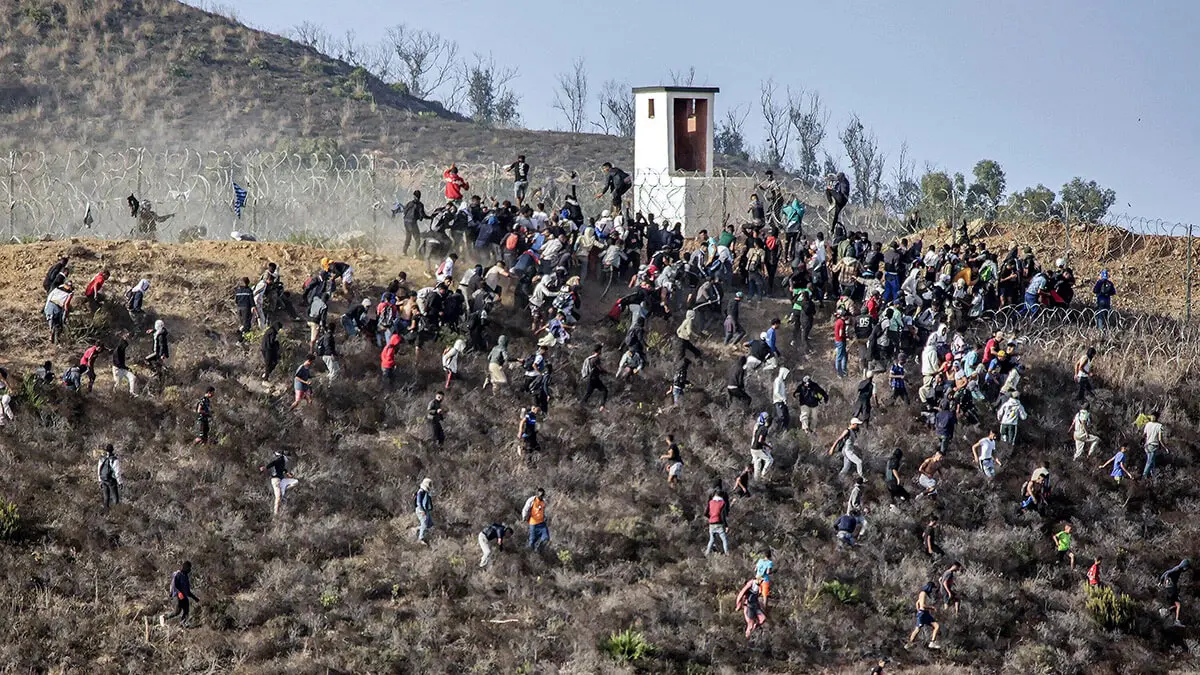
- But what is the ‘Harraga’ phenomenon?
- The Harraga phenomenon on social networks
- Who is behind the phenomenon?
- Multiple targets
- Reinforcements at the border
After the failures of the summons to storm the border this week, the Harraga cancelled the last call and have reorganised to enter at the end of the month, specifically on 30 September, through TikTok, Facebook and WhatsApp groups, with a view to entering Spain. The coordination between the migration crisis and the calls to demonstrate demonstrates meticulous planning.
The phenomenon, which has been going on since the early hours of Saturday morning and whose origin dates back to last Friday, according to police sources, ‘could cause a serious problem at any moment’. There have been up to six attempts at mass jumps in this latest wave, most of them on Sunday. Since the start of the mobilisations, more than 700 illegal immigrants a day have arrived at the Ceuta border.
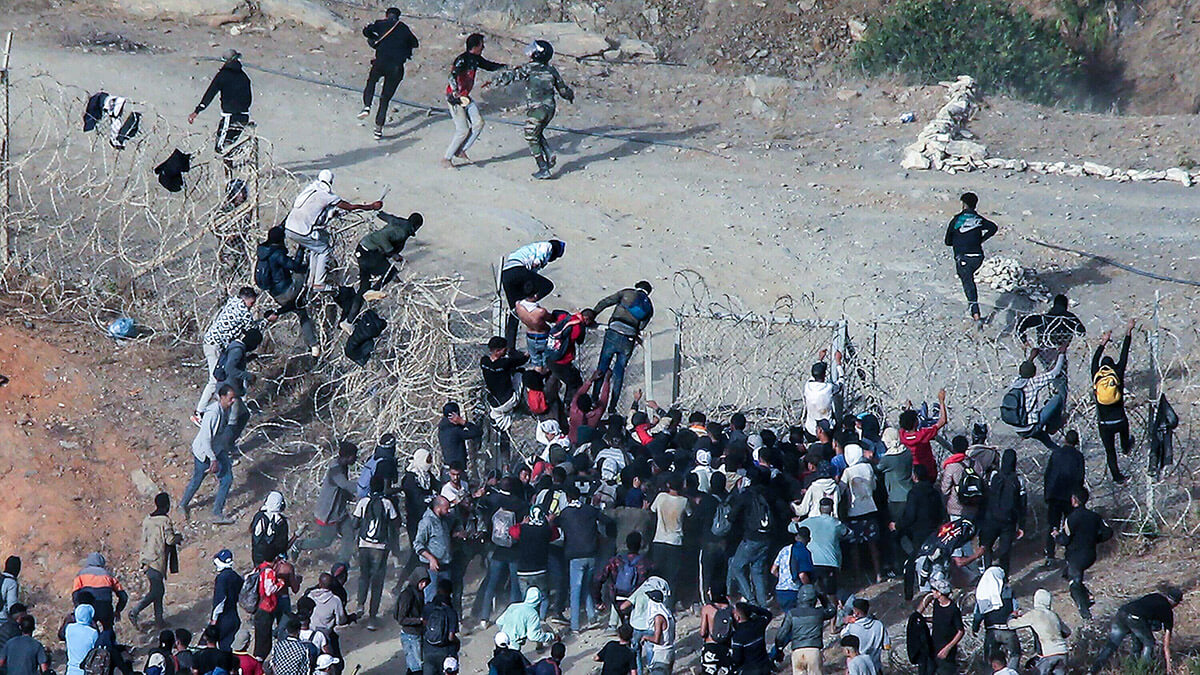
Despite increased security by Morocco and Spain, border tension continues due to campaigns launched on social networks calling on young immigrants to go to the border crossings in order to jump over the fence.
But what is the ‘Harraga’ phenomenon?
The term refers to illegal immigrants from North Africa who want to cross the Mediterranean to Europe. They usually do so in small boats, many with no capacity to reach them. The routes they often use depart from Algeria, due to tightened security at Morocco's borders, mainly from the cities of Algiers, Oran, Mostaganem and Chlef.
The Harraga refer to ‘those who burn’, symbolically referring to those who burn their documents in the course of their journey to Europe in order to be able to move without restrictions.
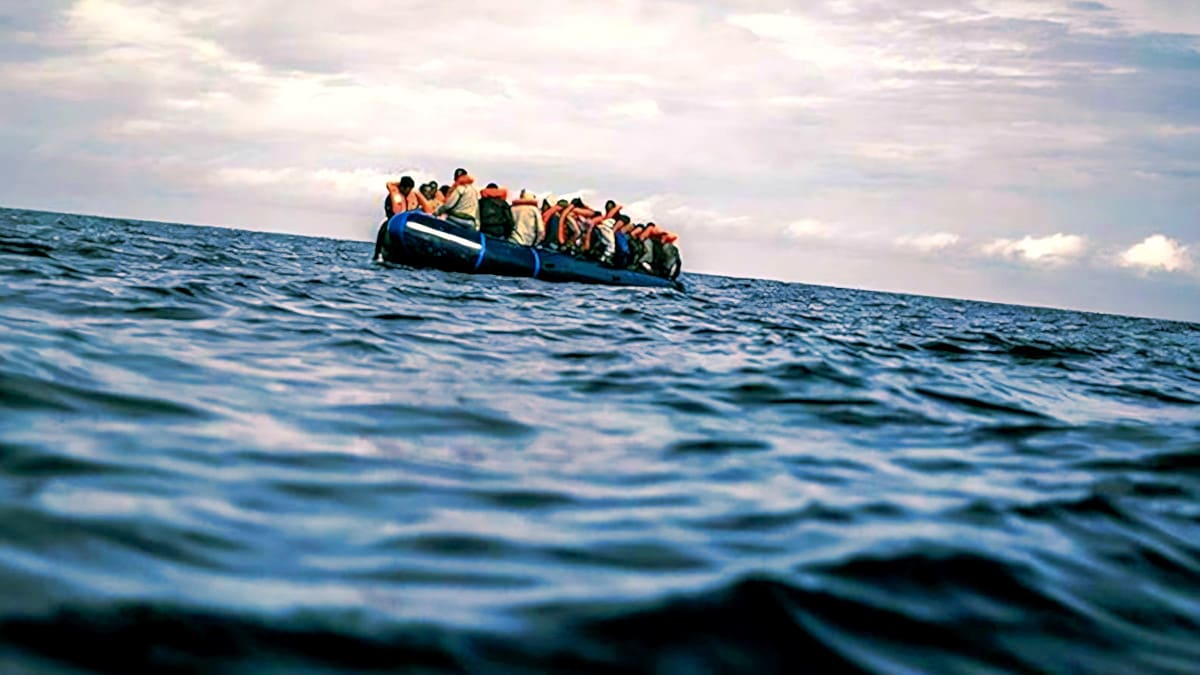
This group of people have historically symbolised ‘burning the borders’ as a grievance against immigration laws and geographical barriers, in their search for a better life, usually in Europe. They believe in Europe as ‘the most certain future and they throw themselves into it with life or death’. To reach their destination, each Harraga spends between 2,000 and 4,000 euros for a journey in which the probability of arriving ‘safe and sound’ is low.
Among the reasons that make them leave their country are the living, working, economic and political conditions. For the Harraga, the harshness of repression does not matter as long as they want to reach a state where they can progress.
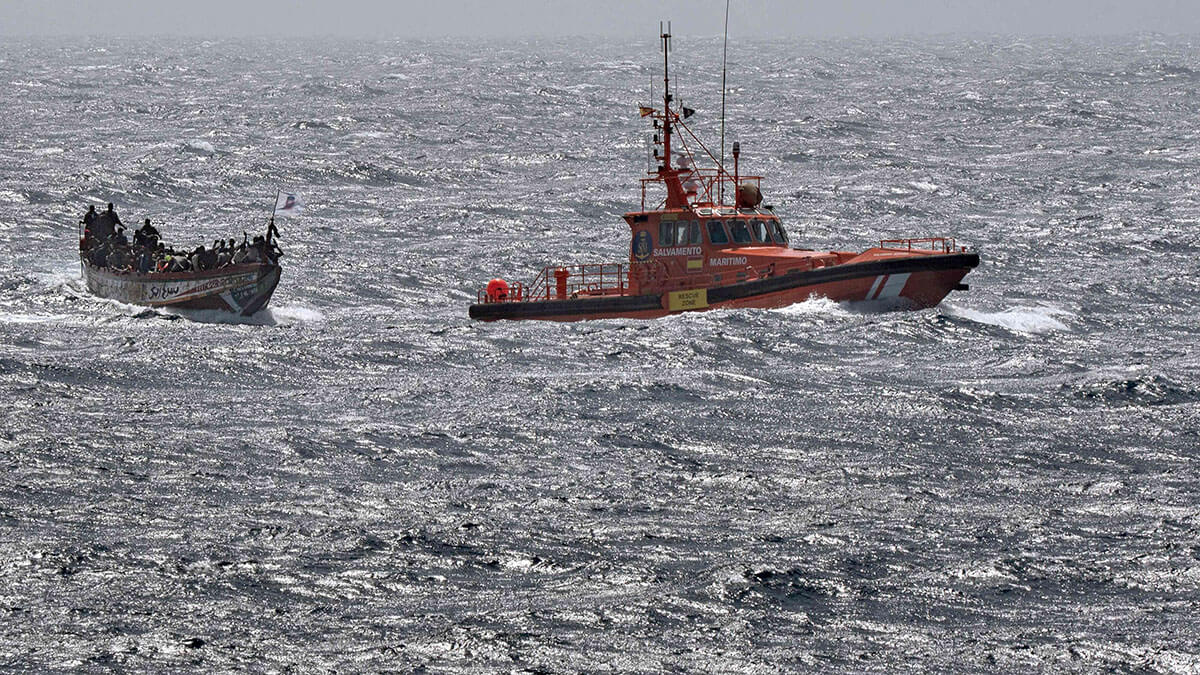
The Harraga phenomenon on social networks
Every day, the young people who cross from Morocco share on social networks their experience and process to reach the Spanish coast. Videos with triumphant music are shared on social networks such as TikTok and are seen by many users. They all include the term #harraga in their description.
They share how they prepare the material they need to reach Spain. In addition to showing the equipment they use, they also show how they hide their fins under their djellaba to try to evade the gendarmes' control.

In fact, there are many accounts labelled as ‘harraga’, in reference to how they destroy their documentation so as not to be identified. Many people share their adventures on social networks, either at night or during the day, avoiding the police. Once they reach their destination, some narrate their experience.
After reaching their destination, some of them show Spanish car plates, the Guardia Civil vehicle, a hotel or any other reference that evidences their achievements in their videos. Some people even edit the reality to hide the drama at the border, showing only what they want to be seen.
Spain and Morocco keep an eye on the social network as they prepare for the next call.
Who is behind the phenomenon?
This operation began thanks to suspicious activity on social networks that alerted Moroccan and Spanish intelligence services, who detected that most of the accounts supporting mass immigration were created around a year ago, with IP addresses that were not from Morocco, a fact that points to the intervention of third parties.
Police sources suggest that there is a possibility that the influence of Algerian intelligence services may have played a part in this phenomenon.
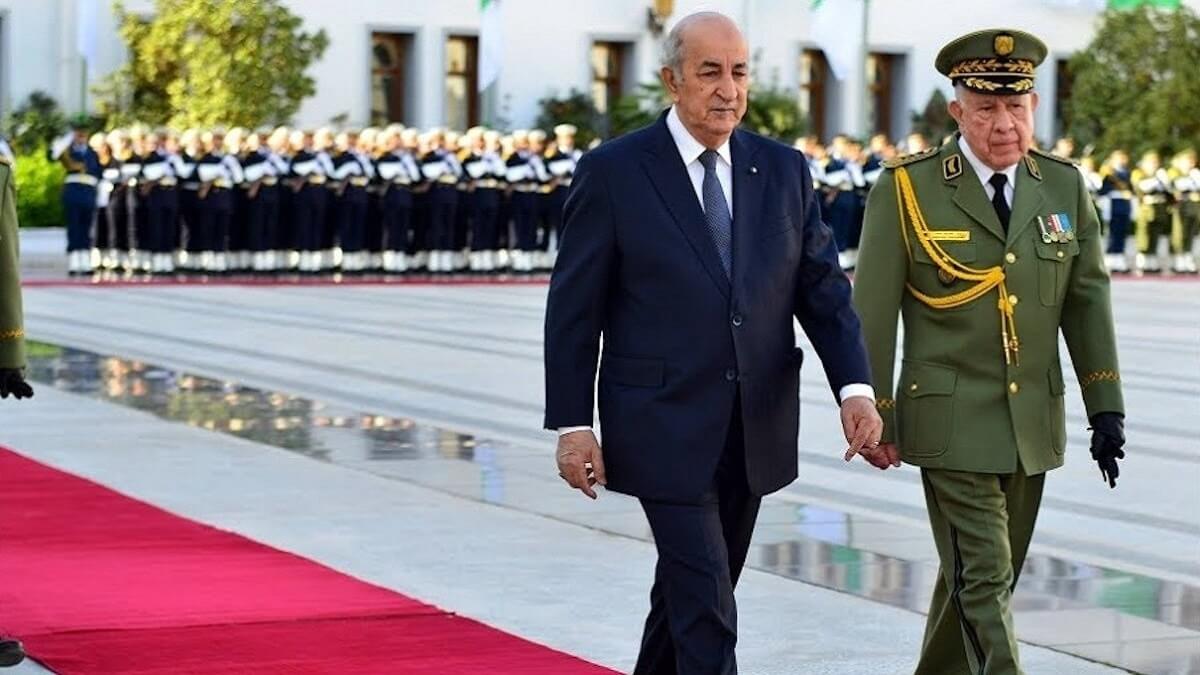
The border assault message was spread using both real and fake Moroccan and Algerian accounts, deliberately promoting illegal migration. This tactic sought to give the movement an authentic and natural feel, and ensured that it would become popular on social media.
Multiple targets
The operation has several related objectives that combine into a coherent strategy to generate destabilisation. The aims range from creating an anti-Moroccan narrative, causing instability both internally and externally, to diverting attention from Algeria's internal conflicts.
Seeking to create an image of social crisis in Morocco, Algeria's intelligence services wanted to attract thousands of migrants to the border in order to portray a false image of Morocco as an authoritarian country that detains thousands of people. This strategy sought to damage the Royal Court's image and give a false sense of repression.
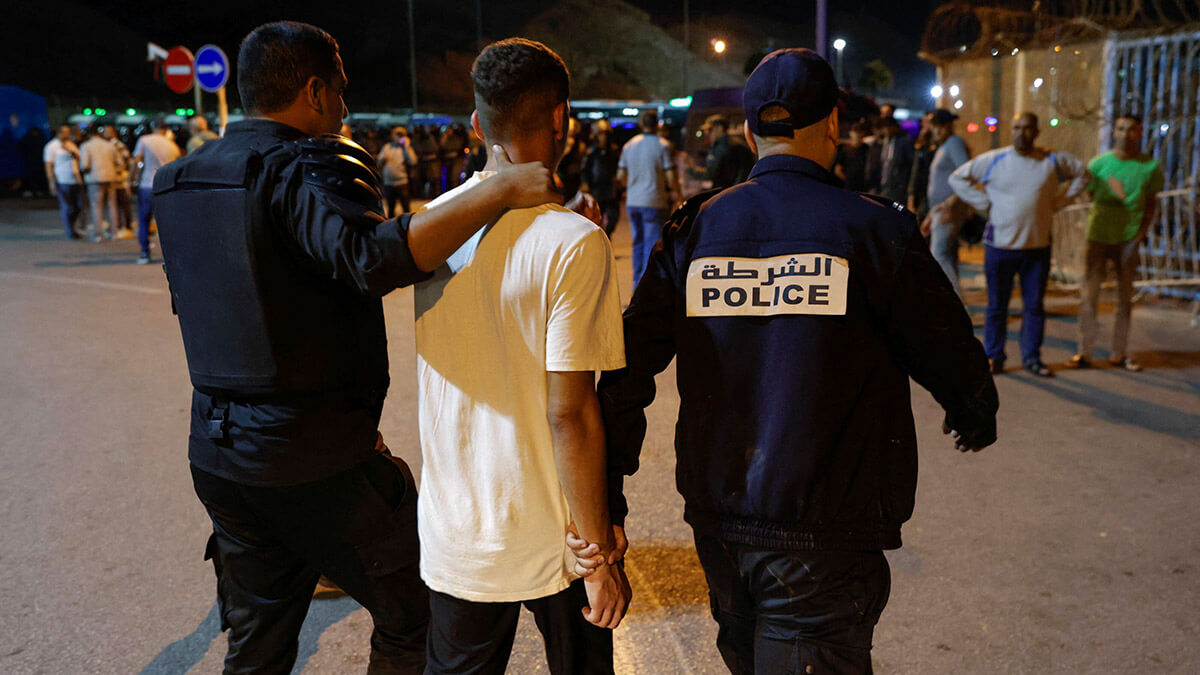
The coincidence of the migration crisis with this movement is not coincidental. The planning had been months in the making. Another of Algeria's objectives is to pressure Morocco to impose a visa on Algerians in order to justify reprisals against Moroccans in Algeria, and to create a pretext for ‘national unity’ in Algeria against the ‘Moroccan enemy’.
Following the Algerian presidential election scandal, which, at the very least, calls into question the legitimacy of Abdelmadjid Tebboune's second term in office, the operation was carried out strategically.
The Algerian government creates a crisis with Morocco to distract the population from internal problems, unite the population in nationalist sentiment and strengthen the contested legitimacy of the ruling regime.
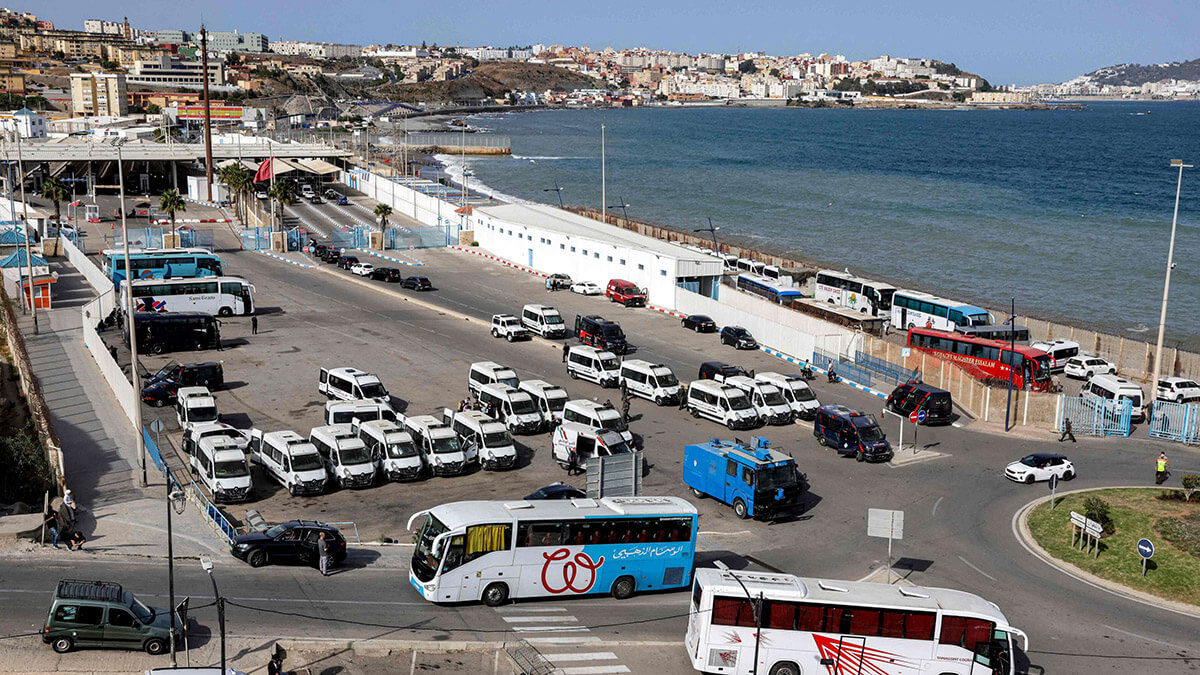
Reinforcements at the border
The use of Spanish and Moroccan security forces has been impeccable. Several international security organisations such as Interpol have already congratulated both countries for their performance, which they are studying and monitoring.
For the most part, 98% of the migrants who tried to cross the Spanish and Moroccan borders were intercepted. The high rate of unidentified migrants was one of the first signs that it was the Harraga phenomenon that was behind the massive calls to jump the Melilla fence and access the Tarajal beach in Ceuta. Specifically, in the area of Castillejos (Fnideq), since the August waves, there have been charges, police custody and dispersal of the groups.

In recent days, the Royal Gendarmerie has been hard at work. Moroccan army auxiliaries were also deployed to cut off access to the beaches and limit movement.
In this context, so far this year, more than 10,600 migrants have crossed the Mediterranean, and more than 4,455 people have been confirmed as having been arrested in attempts to cross to Ceuta between 11 and 15 September, and 60 arrests of instigators of the Harraga movement have been confirmed throughout the territory.
What worries the authorities most are the more than 300 young people who have thrown themselves into the hands of the Harraga to cross the border. This is a true reflection of the harshness of living conditions in Algeria, which, after Tebboune's re-election, are unlikely to change in the short term.
The operation orchestrated by the Algerian intelligence services in 2024 reveals a destabilisation strategy, using migratory flows as a geopolitical weapon.

